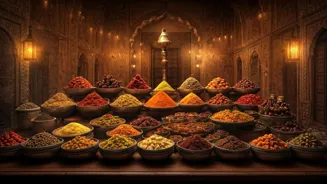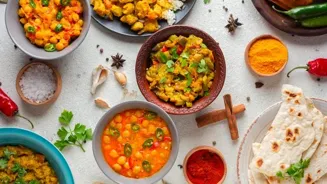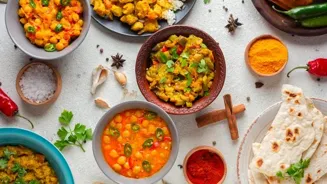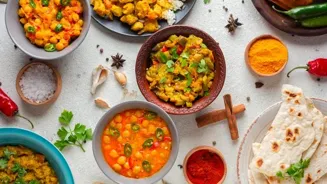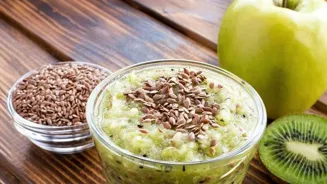Dive into the vibrant world of Indian Thali - a culinary journey of colors, flavors, and tradition. Explore more!
India, a land renowned for its diverse culture and traditions, extends its vibrant tapestry
to the realm of cuisine. Among the myriad culinary offerings, the Indian Thali stands out as a quintessential representation of the country's gastronomic landscape.
It is more than just a meal; it's an experience, a journey through flavors, textures, and aromas that encapsulate the essence of Indian culinary heritage.
A Thali is a complete meal on a round platter, offering diverse tastes and nutrients
A Thali, quite simply, is a round platter, traditionally made of stainless steel, on which an assortment of dishes are served. The beauty of the Thali lies in its completeness; it is a wholesome and balanced meal that offers a variety of tastes and nutrients in a single serving.
The typical components of a Thali include: roti or rice (the staple grain), dal (lentil soup), a variety of vegetable preparations (sabzis), curd or yogurt, pickle, papad, and a sweet dish.
The specific dishes included in a Thali can vary significantly depending on the region, the season, and even the occasion. Each dish is carefully selected to complement the others, creating a harmonious blend of flavors that tantalizes the taste buds.
The Thali showcases balance and variety in Indian cuisine
The beauty of the Thali lies not just in its variety, but also in its balance. Each component plays a specific role in providing a complete nutritional profile.
The roti or rice provides carbohydrates for energy, the dal offers protein, the vegetables provide vitamins and minerals, and the curd or yogurt aids digestion. The pickle adds a spicy and tangy element, while the papad provides a crispy texture.
Finally, the sweet dish offers a satisfying conclusion to the meal. The arrangement of the Thali is also significant. The dishes are typically arranged in small bowls, called "katoris," around the edge of the platter, with the roti or rice placed in the center.
This arrangement allows for easy access to each dish and encourages the diner to sample a little of everything. The Thali is a reflection of the Indian philosophy of food, which emphasizes balance, harmony, and the importance of nourishing both the body and the mind.
Regional Thalis showcase India's diverse culinary traditions
The regional variations in Thalis are a testament to India's diverse culinary landscape. In North India, you might find a Thali featuring dishes like dal makhani, paneer butter masala, and naan. In South India, a Thali might include sambar, rasam, and rice.
In Gujarat, a Thali might feature dhokla, undhiyu, and roti. And in Rajasthan, a Thali might include dal baati churma. Each region has its own unique culinary traditions, and these are reflected in the specific dishes that are included in its Thalis.
For example, coastal regions often feature seafood in their Thalis, while mountainous regions may feature dishes made with locally grown grains and vegetables. The use of spices also varies from region to region, with some regions preferring milder flavors and others preferring more pungent spices.
Preparing a Thali: art of balance, detail, flavor; time-consuming but rewarding feast
Preparing a Thali is an art in itself. It requires careful planning and attention to detail, as each dish must be cooked to perfection and complement the others. The ingredients must be fresh and of high quality, and the spices must be carefully measured to achieve the desired flavor.
The cooking process can be time-consuming, especially if multiple dishes are being prepared. However, the effort is well worth it, as the result is a delicious and satisfying meal that is a feast for the senses.
Many Indian households have their own unique Thali recipes, passed down through generations. These recipes often include secret ingredients and techniques that are said to enhance the flavor and nutritional value of the dishes.
The Thali symbolizes Indian culture through sharing meals and hospitality
The Thali is more than just a meal; it is a cultural symbol. It represents the Indian values of hospitality, generosity, and sharing. In many Indian homes, it is customary to offer guests a Thali as a sign of welcome.
The Thali is also a common feature at festivals and celebrations, where it is often served to large groups of people. Sharing a Thali with family and friends is a way of strengthening bonds and celebrating togetherness.
The Thali is a reminder of the importance of community and the value of sharing a meal with others. It is a symbol of the rich culinary heritage of India and a testament to the country's diverse culture and traditions.
AI Generated Content. Glance/InMobi shall have no liability for the content
